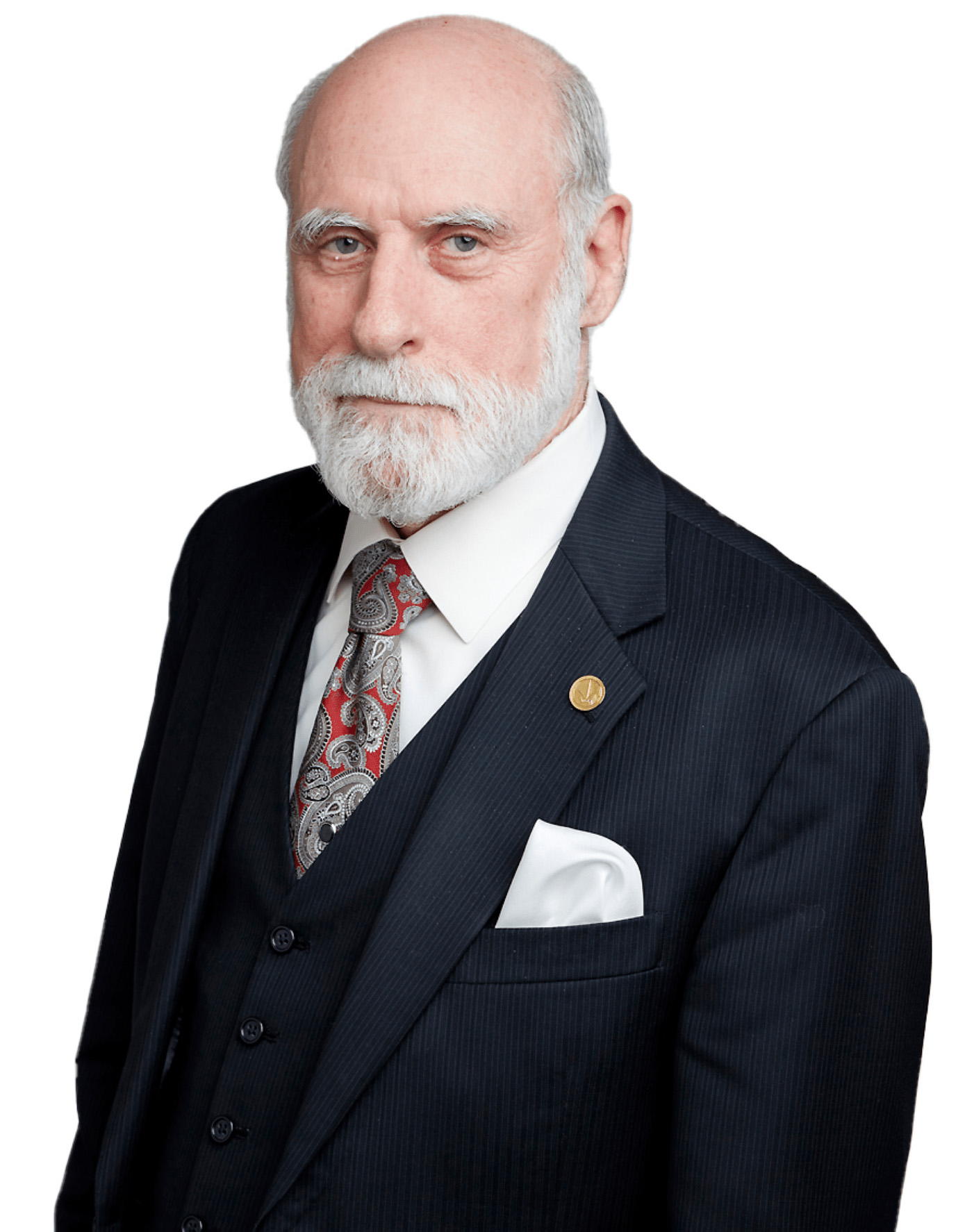Coming of Age with the Internet
"Once the domain of a very limited few, the Internet today is an indispensable tool—a nearly limitless fount of information and entertainment—for practically the whole world."
By Cam Beck
Pioneers of the Web
The internet as we know it today stands on the shoulders of giants - brilliant scientists, engineers, and visionaries who pioneered the fundamental technologies and concepts that underpin the modern internet. People like Pal Baran, Lawrence G. Roberts, Vint Cerf, Jon Postel, Bob Kahn, and Tim Berners-Lee made significant contributions to an environment that revolutionized the distribution of information and transformed the way people interact with one another. Entire industries now exist because of their efforts, and the efforts of many people like them.
Key Moments
- – Idea birthed for packet switching for data communications in computer networks.
- – ARPANET initiated to enable resource sharing between large, immobile computers through routers.
- – Xerox PARC founded by to develop computer tech products and systems.
- – TCP/IP packet-switching protocol invented
- – First commercial ISP born, called Telenet
- – Domain Name System (DNS) establishes top level domains such as .com, .net, .org, .gov, and .mil
- – First domain registered (symbolics.com)
THE EARLY YEARS (1989–1996)
The Internet exploded onto the scene and grew rapidly between 1989 and 1996, laying the groundwork for the digital world we know today. The technology improvements made during that period played a crucial role in making the Internet more accessible, faster, and more reliable, and paved the way for the explosion of Internet usage and growth in the years that followed. As public access skyrocketed, businesses and entrepreneurs began recognizing the Web's potential for commerce and communication by launching and growing new ventures in the nascent Web.
Key Moments
- – The World, the first commercial ISP in the United States, opened
- – The Web opened to the public
- – The term “User Experience” coined by Donald Norman at Apple Computer
- – Term “e-commerce” coined when NetMarket launched
- – Amazon.com launched
- – JavaScript invented
- – NSFNET decommissioned and NAPs Created (1995), setting the stage for bandwidth explosion to come over the next two decades
- – ICANN established to manage Internet domains and IP addresses
- – Macromedia launched Flash for production of rich animations and applications

ADOLESCENCE (1997-2011)
This was a time of rapid change and innovation in the world of the Internet, characterized by network improvements, standardization, and battles for dominance between browser vendors, search engines, and peer-to-peer communications through social media and e-commerce applications. These developments have paved the way for the modern internet as we know it today, with faster speeds allowing for things like more complicated business interactions and video streaming, more widespread access, and a vast array of online services and platforms available to users around the world.
Toward the end of this period, Mark Cuban declared the Internet “dead and boring” and wouldn’t be the source of explosively exciting ideas without last-mile bandwidth improvements — nothing more than a utility (which, he argued, was not a bad thing). However, last-mile bandwidth improvements were on the horizon, and the launch of blockchain, mass adoption of always-connected culture through phones, tablets, other wearables, and home appliances was nearly in view.
Key Moments
- – Internet Explorer 4.0 web browser launched
- – First cloud-hosted business application (Netsuite) launched
- – Paypal founded
- – CSS2 introduced
- –
- – Bluetooth 1.0 released
-
–
WCAG 1.0 released
- – Usability specialist Jakob Nielsen declares Flash “99% bad”
- – Firefox web browser released
- – YouTube video upload and playing platform launched
- – Apple iPhone released
- – Netflix offers streaming service
- – First Android phone released
- – Google Chrome web browser released
- – Blockchain implemented and Bitcoin launched
- – Fitbit introduced
- – Citing security and resource concerns, Steve Jobs declares iPhone will never run Flash
Key Moments
- – The Internet Society launched IPv6, providing more IP addresses and better security
- –
- – Edward Snowden leaks information about the U.S. government's surveillance programs to the press, sparking a debate about government surveillance, privacy, and whistleblowing that continues to this day.
- – Apple Watch launched
- –
- – The Online Sales Simplification Act passed
- – Winn-Dixie ordered by a US District Court to conform its website to WCAG 2.0 criteria for accessibility based on the Americans with Disabilities Act's (ADA) provisions for public accommodations.
- – The European Union's General Data Protection Regulation (GDPR) implemented.
- – Dominos ordered to make its site accessible under the ADA
- – COVID-19 pandemic strikes. Mitigation measures accelerate adoption of online ordering and fulfillment services, including video conferencing, grocery shopping, and curbside pickup for all kinds of retailers.
- –
- – ChatGPT released
EARLY ADULTHOOD (2012-2023)
Over this period, government and non-government organizations faced controversies and challenges that shaped the direction of the Internet.
One of the key trends in internet usage over this period has been the increasing standardization of web technologies that have helped to make the web more accessible and user-friendly across a range of devices and platforms. At the same time, other innovations like WebAssembly and Progressive Web Apps have enabled more sophisticated web applications and services, such as social media, e-commerce, and cloud computing.
Privacy also took center stage during this time frame. Fueled by major data breaches and criticisms that major tech platforms were using personal information unethically, people began demanding action, which came in the form of new regulations such as GDPR in Europe and CCPA in California.

THE FUTURE (2024 and Beyond)
Regardless of what technologies are developed in the future, some things will never go out of fashion. Service, empathy, and earned mutual trust will always be valued. These must all fit hand-in-hand with technological competence to create solutions that people need and want and that deliver measurable business results. Insite continues to chart a course that is focused on helping our clients succeed. Every client needs are different, and our company meets our clients where they are with an eye on where they need to go, staffing and training to master the technologies needed for the transitions that they have to make to accomplish their goals.
Photos:


